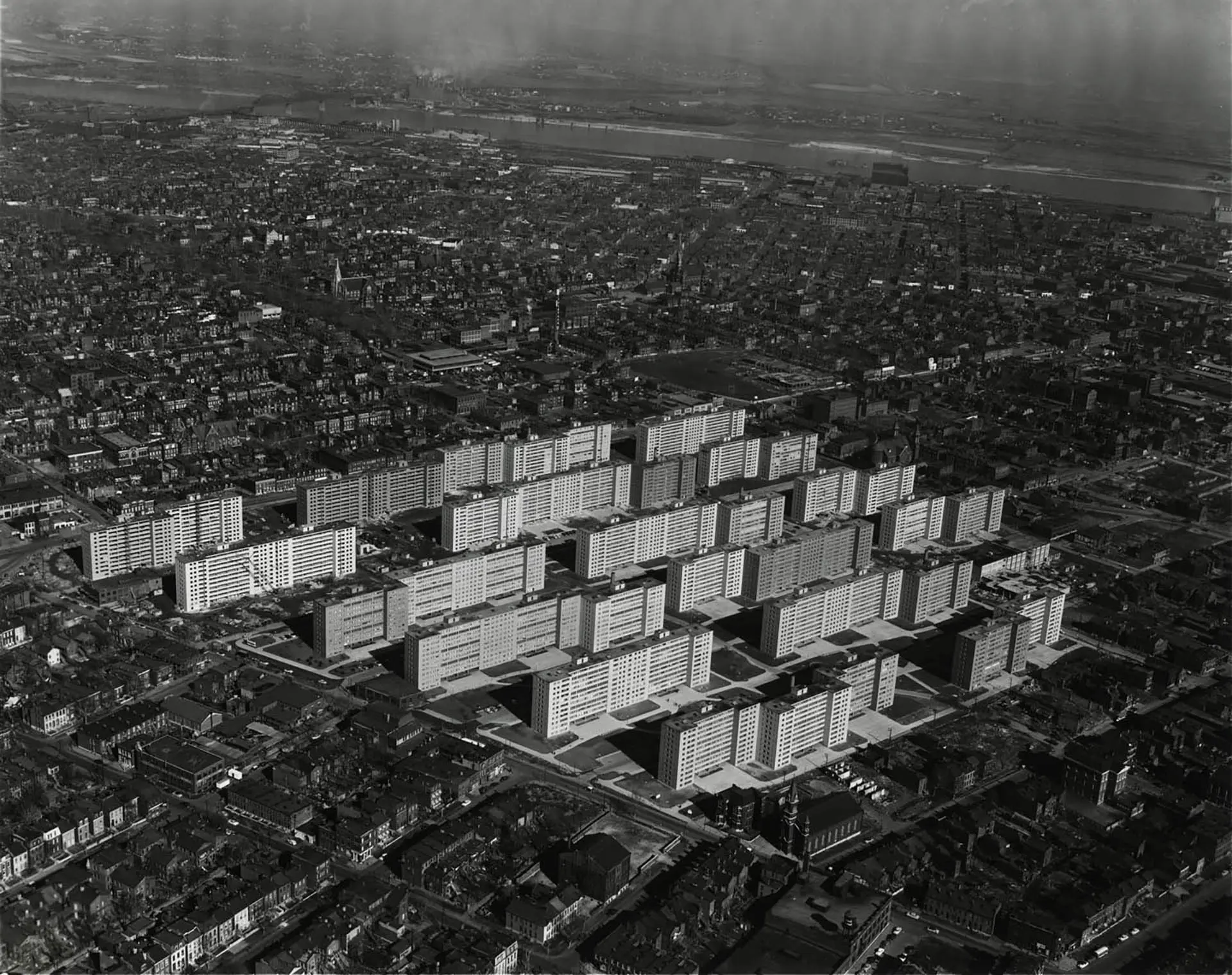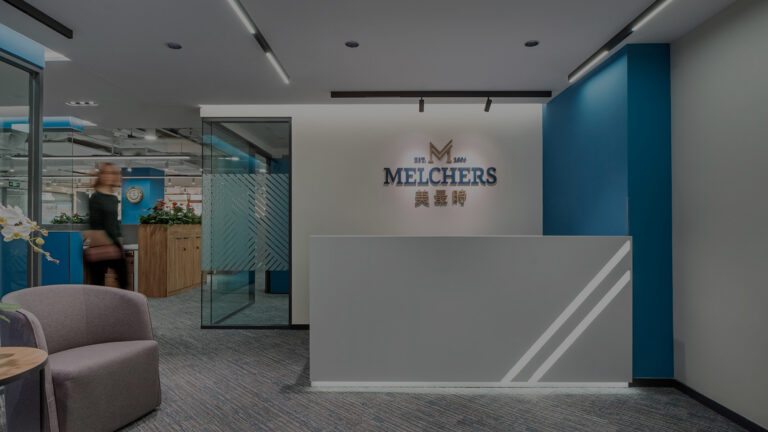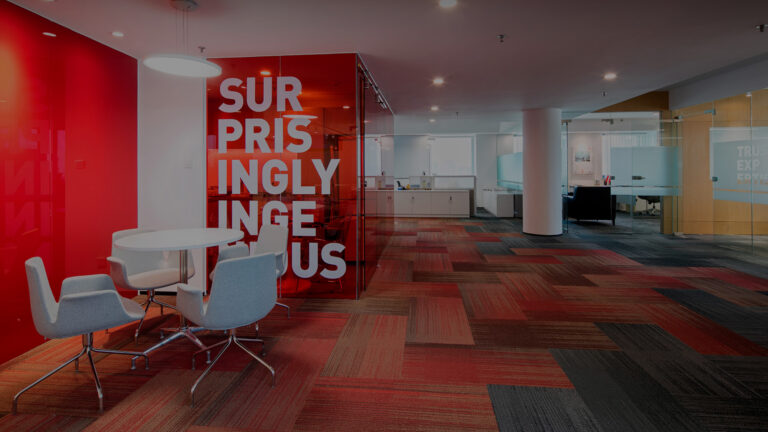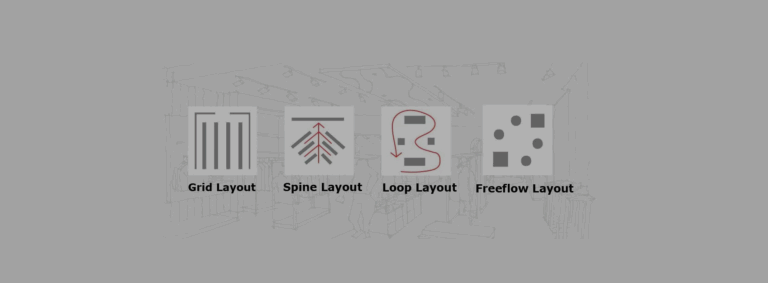In the previous article of our “How Can Psychological Effects of Architecture Benefit Your Business?” series, we defined environmental psychology and its basis. We described what human preferences are, what beauty is and how architecture can serve as a form of stress release. With some examples from all around the world, we took a glimpse at factors that have a positive effect on the human mind and soul. However, we also think that it’s essential to discuss potential mistakes. In this article, we will write about architectural styles that have questionable or even contradictory effects on people.
Trading Beauty for Utility
Nowadays, it’s commonly recognized that architecture has a psychological effect on people. However, there were times when these effects were ignored. After World War II, during the time of the baby boom, there was an increased demand for housing. That created a need for a fast, more efficient building process which – combined with the lack of behavioral insights – resulted in less detailed, smaller houses. These buildings focused on form, utility, and craft instead of beauty. In the US, Suburbia was born with endless rows of same-looking houses situated as close together as possible to make space for more buildings. This development also influenced the industrial side of the built environment. The primary materials used in these box-like, futuristic buildings were glass, concrete, aluminum, synthetics, and steel. This trend resulted in a lack of intellectual stimulation, it removed every aspect of human touch by creating a cold, unwelcoming environment. The style lacked the ability to produce a positive physiological response or a sense of well-being in humans. Fortunately, the need for individual, unique and creative architecture appeared soon after.
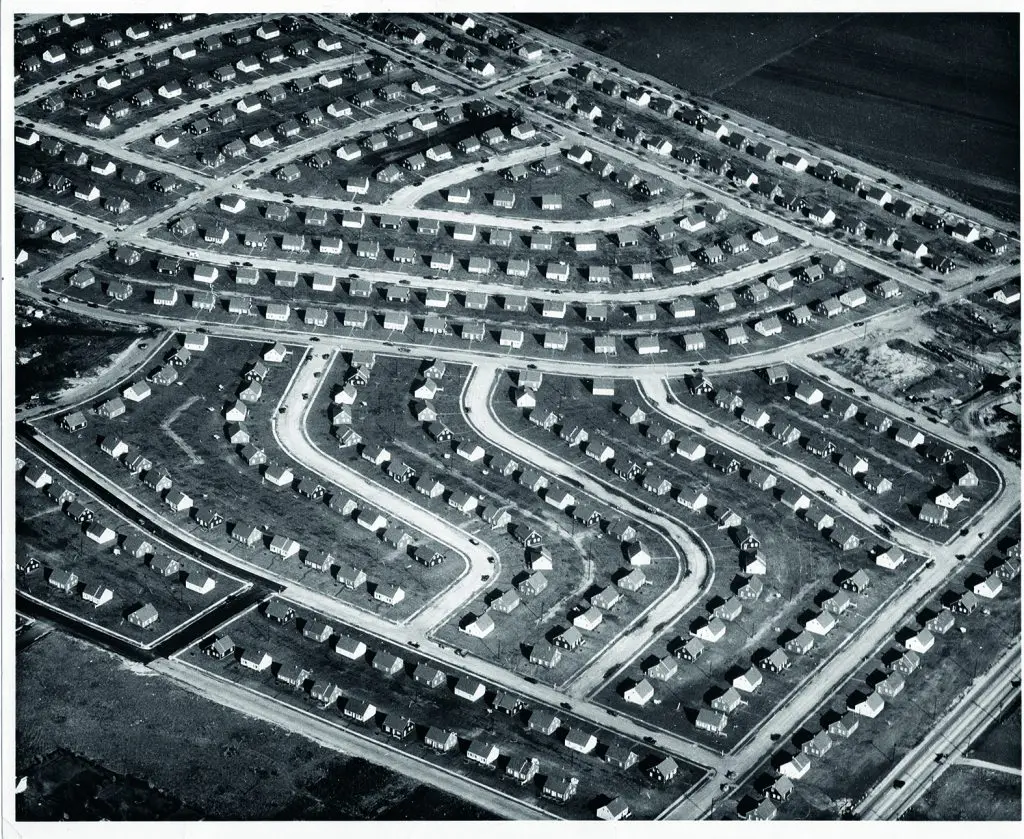
“The stressful, overcrowded, and repetitive neighborhoods that characterized suburbia”
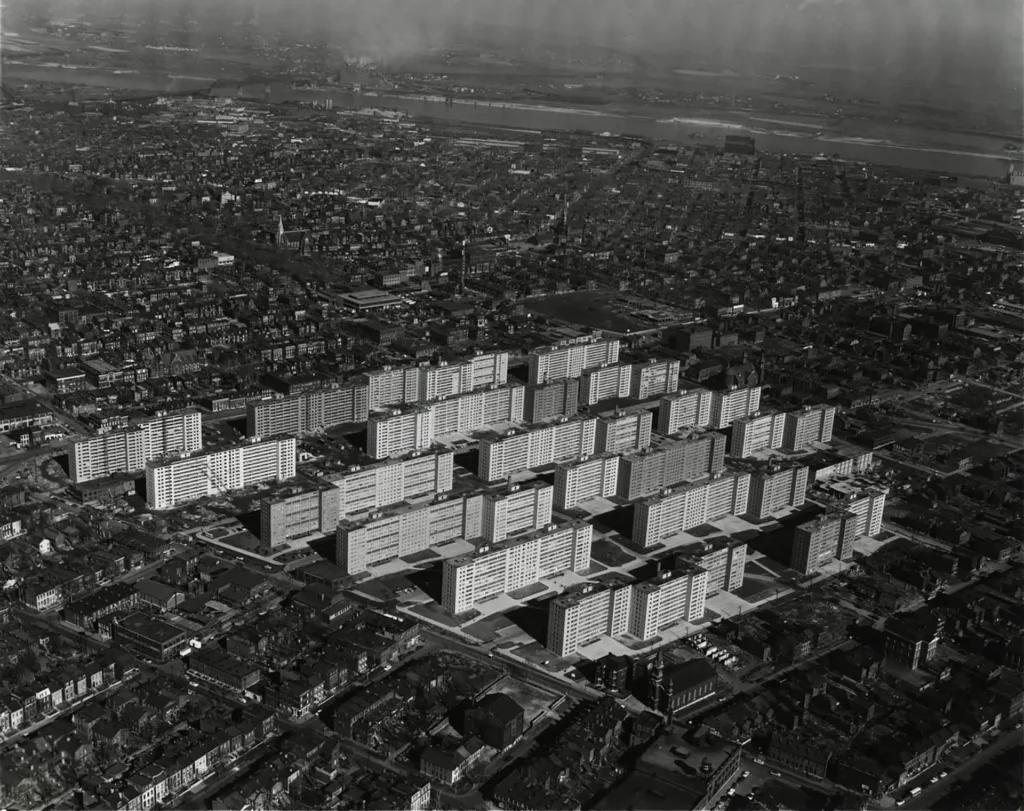
“Pruitt-Igoe housing complex in St Louis, Missouri was demolished in 1972. Critics argued that the wide open spaces between the blocks of modernist high-rises discouraged a sense of community, particularly as crime rates started to rise”
Undesirable Effects of Design and Architecture
People’s mood is strongly affected by the design of the fa?ade of the buildings they pass by every day. When the fa?ade is complex and engaging, it positively affects people. On the contrary, it has a negative effect if it is simple and monotonous. Colline Ellars and Charles Montgomery conducted continued research in this area. The scientists made groups of people wear a device on their wrists that monitored their vitals. The people were asked to walk along a specific route in Lower Manhattan. When the group walked past the long, smoked-glass frontage of buildings, their states of mood dived according to the wristband. They also started to walk faster in order to hurry out of that area. When they reached a stretch of nicely designed restaurants and stores, they reported feeling livelier and more engaged. This experience shows that buildings, fa?ades that employ beauty and patterns can stand the test of changing styles over time and the preferences of society.
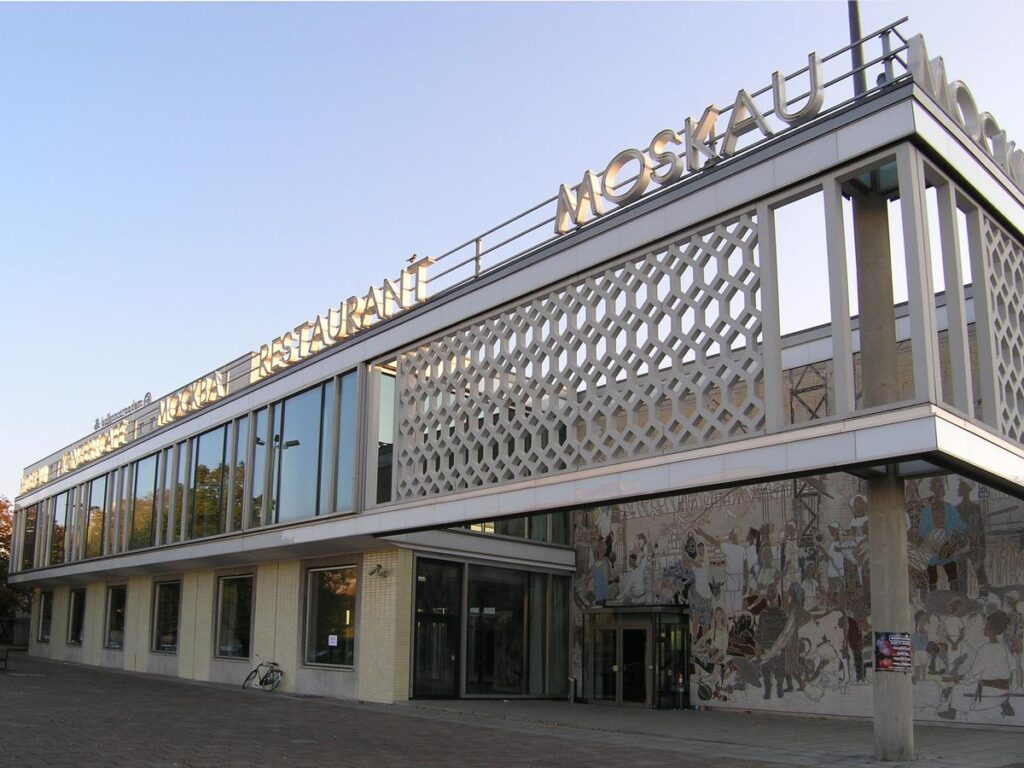
“Simple and monotonous fa?ade has a negative effect on passer-bys”
Not only the design itself, but poorly constructed buildings and surroundings have a considerable negative impact on our wellbeeing. Studies have shown that ruined houses, neighborhoods, and abandoned buildings make us feel unsafe. Poorly maintained establishments make us nervous and fearful by activating our sympathetic nervous system. Constant exposure to negative characteristics, like dull, repetitive chain stores can be harmful to health since they can be a source of chronic stress. Ideally, the construction of new buildings and urban areas should not simply avoid these negative features, but work to balance them by incorporating the methods of beautiful design. When the built environment contains a great variety of independent shops and unique areas it can stimulate our minds.
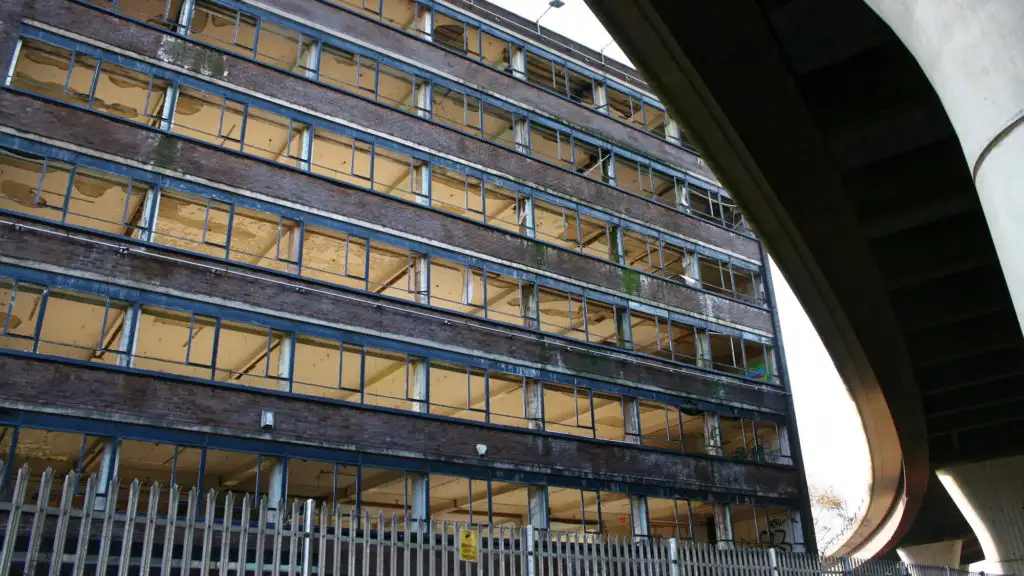
“Abandoned buildings make us feel unsafe”
Retail Store Interiors
When it comes to store interiors, some elements can make humans feel less relaxed: the lack of greenery, too many straight lines, and darkness. Dark areas can make people feel gloomy and depressed, while cramped and closed areas can promote a sense of claustrophobia. On the other hand, well-lit spaces with good ventilation make people feel welcome. Large, open spaces can provide the freedom to move around and feel more limitless.
Architects and designers should always design with a clear purpose in their minds. They should keep in mind that customers seek to surround themselves with colors, objects, and feelings that portray positivity, safety, pleasure, and health. The good retail design provides an easily navigable space, and an experience creating unique memories that inspire brand loyalty based on positivity. Furthermore, store environments also have to express the brand personalities and positioning accurately, and those spaces that are not well designed reflect negatively back onto the brand image. We have covered the most important aspects that positively influence customers in our Design Principles in Store Design series.
In the upcoming last article of this series, we will describe the importance of human interaction with the environment. We will show how the field of environmental psychology studies the environment’s impact on human behavior and the consequences of our behavior on that environment.

